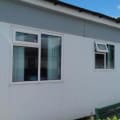How To Tile A Floor
Are you interested in having a tiled floor in your residential or commercial space? There are so many benefits that comes with installing tiles and that’s why so many home or property owners are considering it. Not only do they increase the visual appeal of the property, but they’re also resistant to moisture helping to increase the durability of the house, whether it’s wall or floor tiles. So if you wish to lay tiles for your house, this guide will help put you in the right direction, ensuring you get it right, the first time.
Floor Tiles Installation Procedures
lFloor Preparation
• The first step is to prepare the floor by moving all objects like mortar, adhesives and more.
• Use concrete patching compound to fill ill low spots and cracks, until the floor is levelled.
• Ensure the floor is dry and clean.
lPattern Layout
• Take the measurement of each wall’s length while also taking into account the room’s diagonals.
• To help place the tiles in an orderly manner, make use of a chalk to mark down lines on the levelled surface in question and ensure it’s parallel to the walls.
lAdhesive Preparation
• Mix the appropriate amount of water with the adhesive (bonding agent).
• The mixture should be toothpaste-like thick to ensure the durability of the tiles.
lTiles Placement
• Depending on the tile’s size, evenly spread the mortar on the floor using a notched trowel.
• Lay the first tile on the bonding agent (adhesive or mortar) and apply a gentle and little pressure on the tile.
• Repeat the technique for other tiles using plastic spacers to ensure the edges and corners are properly aligned.
lTiles Cutting
• Cut the tiles (if necessary) with the help of a wet saw or scoring cutter featuring a diamond-tripped blade.
lGrout Application
• Filling of the tiles’ gap is done using the grout. It can be applied to the joints with a rubber float.
• After application, allow the grout to set up for some minutes.
• Use sponge and a bucket of water to clear out any adhesive leftover.
lGrout Sealing
• Use a foam brush or applicator bottle for the sealants’ application.
• Clean out excess sealer within 10 minutes.
Floor tiling can be a very tricky activity that can end up being disastrous, especially when done by a novice. Unless you have prior experience or well-trained, it would be advisable to employ the services of a seasoned professional - it’ll save you lots of time, money and guarantee a top quality job is done.





